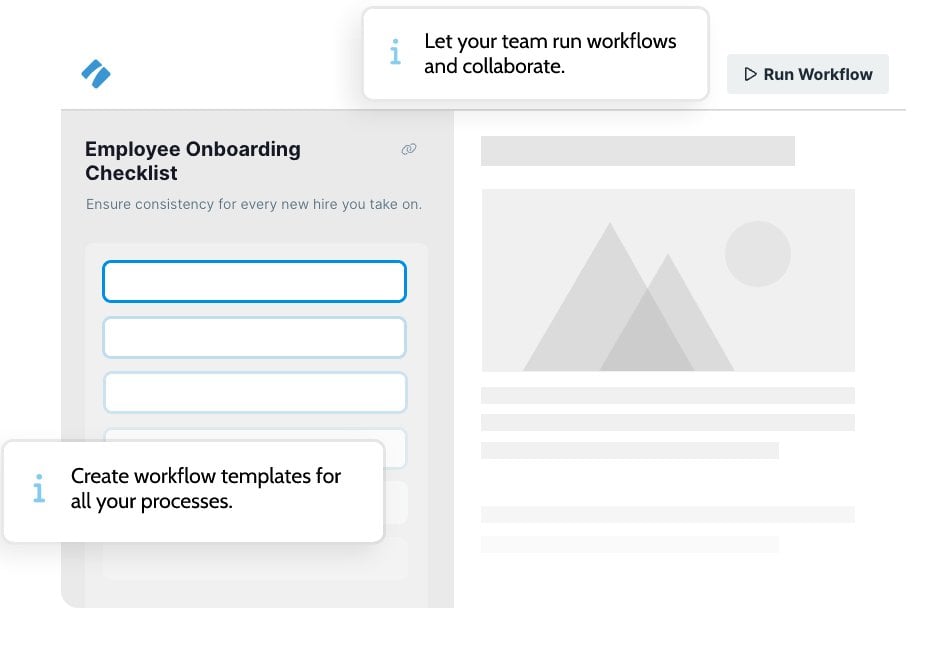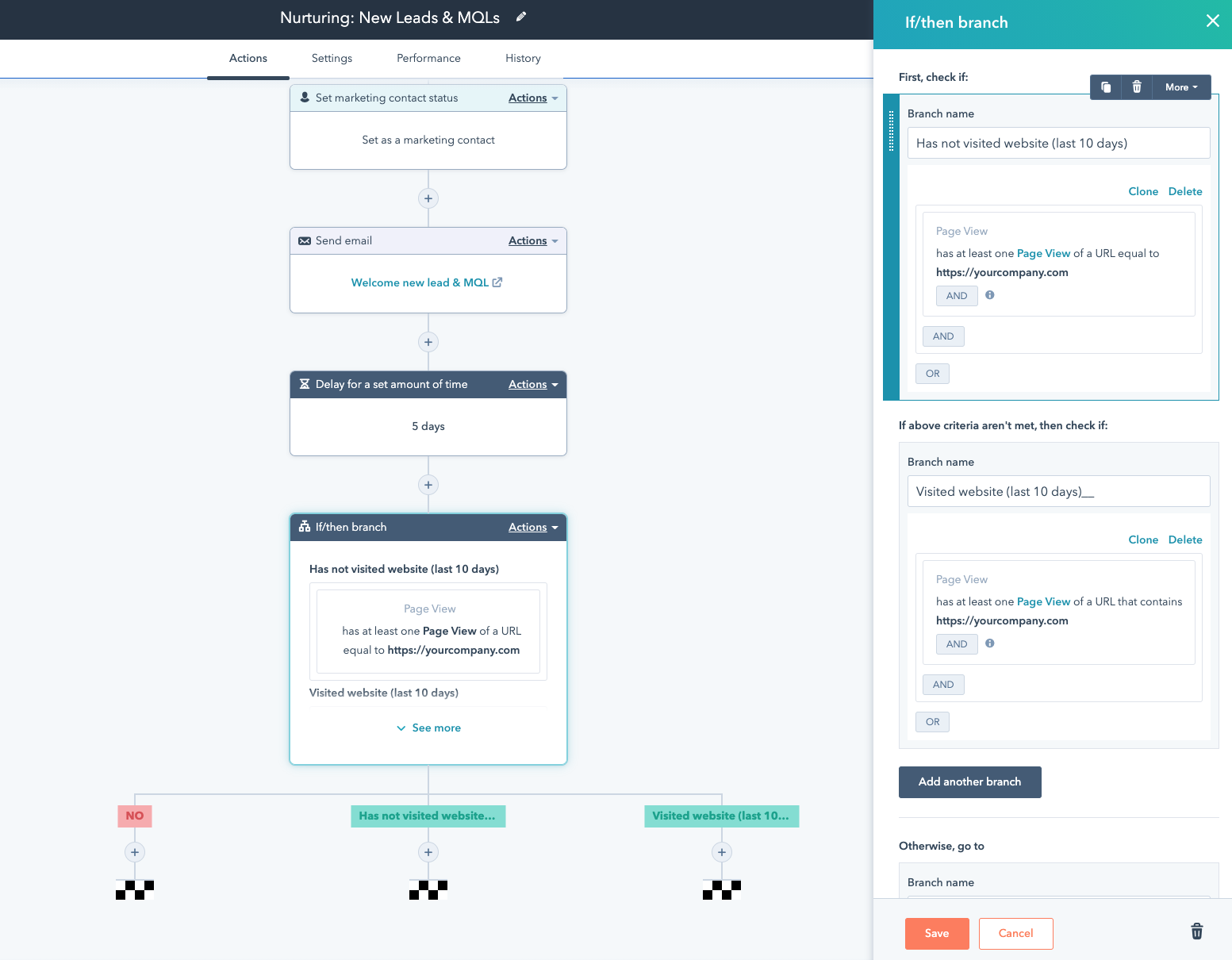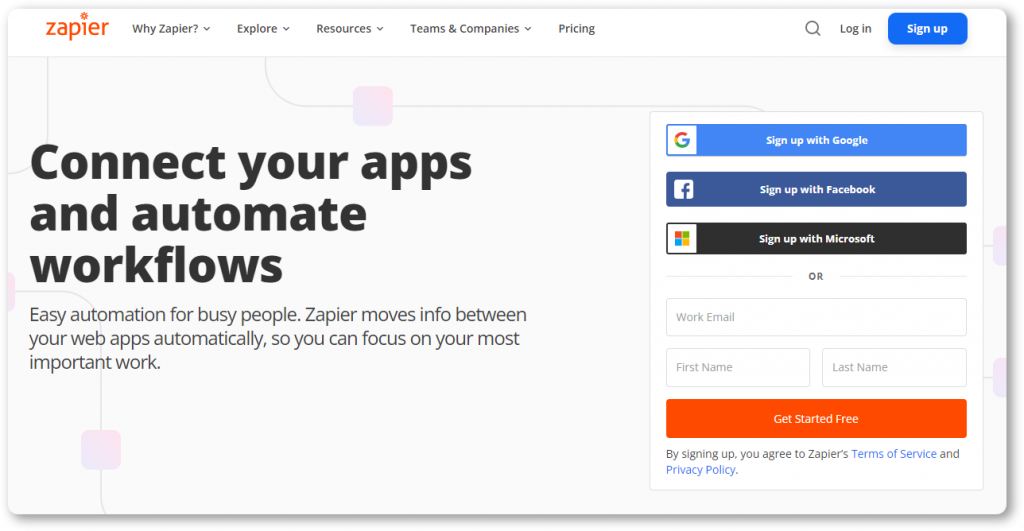Get started quickly, see results immediately, no code needed.
Workflow Automation 101 – All You Need to Know
One solution driving this shift is workflow automation. By using technology to automate repetitive, manual tasks, businesses can free up time and resources for more strategic initiatives.
From managing routine emails to automating entire project management systems, workflow automation is transforming the way we work, enabling teams to operate smarter and faster.
This article explores the power of workflow automation, its key benefits, and how it is reshaping modern workplaces.
We’ll cover:
- What is Workflow Automation?
- Why is Workflow Automation Important?
- Stages of Workflow Automation
- Benefits of Workflow Automation
- Challenges of Workflow Automation
- Workflow Automation Best Practices
- Workflow Automation Software Tools & Vendors
- Workflow Automation Examples
- Workflow Automation Templates
- Making Workflow Automation a Priority
Let’s dive in!
What is Workflow Automation?
Workflow automation refers to the use of technology to perform routine, manual tasks without human intervention. It involves setting up systems, software, or tools that automatically execute predefined tasks, processes, or actions based on specific triggers, conditions, or rules.
These workflows can span across various business functions, such as finance, marketing, human resources, and IT, and are designed to:
- Streamline operations
- Reduce errors
- Increase efficiency
Instead of manually handling repetitive tasks like data entry, approvals, email notifications, or scheduling, workflow automation allows these activities to run autonomously.
For example, an automated approval workflow in a company might automatically route documents to the right stakeholders based on predefined rules, reducing bottlenecks and the need for constant follow-ups.
The end goal of workflow automation is to improve productivity, minimize human error, and allow employees to focus on higher-value tasks that require critical thinking and creativity.
Why is Workflow Automation Important?
Workflow automation is important because it transforms how businesses operate, offering several key benefits that enhance efficiency, accuracy, and productivity. Here’s why it matters:
Enhanced Communication and Collaboration
Automated workflows ensure that information is shared seamlessly across departments, keeping everyone on the same page. This promotes better collaboration and reduces the communication gaps that can slow down processes.
Increased Efficiency
By automating repetitive and time-consuming tasks, companies can significantly reduce the time required to complete processes. This allows employees to focus on more strategic, value-added tasks rather than being bogged down by routine work.
Reduced Human Error
Manual tasks are prone to errors, such as data entry mistakes or missed deadlines. Automation ensures tasks are carried out consistently and accurately, minimizing the risk of costly mistakes.
Cost Savings
Workflow automation reduces the need for manual labor and improves resource utilization, which can lead to substantial cost savings. It can also help cut operational costs by streamlining processes and reducing overhead.
Improved Productivity
With routine processes handled automatically, teams can complete more work in less time. This improved productivity can lead to faster project completions, increased output, and better business outcomes.
Stages of Workflow Automation
The process of implementing workflow automation typically follows six key stages. These stages ensure that automation is thoughtfully designed, implemented, and refined to maximize efficiency and effectiveness. Here’s an overview of the six stages of workflow automation:
1. Identify Processes to Automate
The first step is to identify which workflows are suitable for automation. These are typically repetitive, time-consuming, and rule-based tasks that don’t require human judgment. Examples include invoice approvals, employee onboarding, or data entry processes. It’s essential to prioritize workflows that have a high impact on productivity or are prone to errors when done manually.
2. Map Out the Current Workflow
Once the processes are identified, the next step is to document how the workflow currently functions. This includes identifying each step, task owners, triggers, inputs, and outputs. Mapping the existing process helps to understand inefficiencies or bottlenecks that automation can address and ensures a smooth transition from manual to automated workflows.
3. Set Automation Goals
Before implementing automation, it’s crucial to define clear objectives. What is the expected outcome of automation? This could include reducing processing time, eliminating errors, improving scalability, or enhancing compliance. These goals will guide the design of the automated workflow and provide benchmarks for measuring its success.
4. Choose the Right Automation Tools
The next step is to select the appropriate tools or software that can support the automation of the identified workflows. This could be workflow management software, specialized automation tools, or even custom-built solutions depending on the complexity of the process. The chosen tools should integrate seamlessly with existing systems and offer the flexibility to scale and adapt as business needs evolve.
5. Design and Test the Automated Workflow
After selecting the tools, the actual design of the automated workflow begins. This involves setting up rules, triggers, and conditions that dictate how tasks are handled automatically. Once the design is ready, testing is essential to ensure the workflow functions as expected. During the testing phase, it’s important to simulate real-world scenarios, identify potential issues, and fine-tune the automation.
6. Deploy and Monitor
Once the workflow has been tested and refined, it’s time to deploy the automation. However, the process doesn’t end at deployment. Ongoing monitoring is necessary to track the performance of the automated workflow against the predefined goals. Regular monitoring allows you to identify any issues, make adjustments, and continuously improve the system as business needs evolve.
Benefits of Workflow Automation
“So, with all the amazing things said so far, how many workflow automation benefits are there?” we hear you ask.
Well, plenty, actually!
But the most important ones are listed below for your convenience.
Amplified Productivity
Your team will quickly feel the difference after you’ve introduced workflow automation.
Guaranteed! Their workday will simply become much more productive, which will also increase their overall productivity.
All the manual, repetitive tasks will now be automated, no more updating information in multiple tools. No more waiting for approvals to reach them when it’s too late.
Now, everyone can stay in the loop by being able to track approvals and tasks in the workflow system.
Fewer Errors
Humans are prone to errors. Fact.
Naturally, aiming for no mistakes, even with workflow automation software, is unattainable.
But automations will significantly reduce those errors so you can focus on more important things.
That’s because the system will pinpoint precisely where the issues lie and, over time, you’ll be able to determine why they happen and how to avoid them in the future.
Improved Communication
Communicating effectively across departments or even teams can take time and effort.
Workflow automation improves communication by allowing you to see exactly where your colleagues are with their tasks. Have they done most of it already? Or are they well behind, so a quick nudge may be needed?
In any case, you won’t need to worry about sending numerous emails – just check the workflow system to track progress.
Juggle Multiple Tasks with Ease
All your requests, approvals, onboarding tasks, and more will be accessible from a single place.
Now everything will be:
- Organized according to importance
- Delegated automatically
- Configured to trigger steps based on pre-set conditions
- Accessed quicker
This will make it easier for you to juggle multiple tasks while not losing momentum.
Increased Trust
No one likes micromanagement. We all come to work to do our jobs, and most of us want to perform well and be trusted to do so.
Workflow automation can increase that trust by making each task crystal clear and all goals precisely defined.
When everyone is assigned their tasks and knows what to do, you can concentrate on doing your job, too.
You also gain more control over your data, so only specific people can access certain files and documents. This means that sensitive information can be withheld while company-wide announcements quickly distributed.
Challenges of Workflow Automation
With all the benefits, it’s easy to ignore workflow automation challenges, but they are there.
So here are the most common challenges that you may encounter:
- Choosing the wrong software: If you don’t know what to look for, you may end up purchasing software unsuitable for your company and your needs.
- Employee resistance: Even the best software won’t be able to help if your employees are unwilling to learn how to use it. You should provide ample training and encourage your employees to explore the new tools.
- Privacy breaches: Workflow automation makes it easy for everyone in the company to view and share tasks and documents. But if your chosen software doesn’t offer security and privacy features, you may have a big problem.
Workflow Automation Best Practices
Implementing workflow automation effectively requires careful planning and execution. Here are some best practices to follow for successful workflow automation:
1. Start with High-Impact Areas
Begin by automating workflows that offer the most significant return on investment in terms of time saved, error reduction, or improved productivity. Look for processes that are highly repetitive, manual, and time-consuming. Automating these tasks will provide quick wins and demonstrate the value of workflow automation.
2. Understand the Current Workflow
Before automating, thoroughly map out the existing process to understand each step, task owner, and decision point. Identify any bottlenecks or inefficiencies and focus on improving these areas through automation. Ensure that the workflow’s logic and objectives are clear before building an automated solution.
3. Set Clear Automation Goals
Define specific objectives for each automation initiative, such as reducing turnaround time, increasing throughput, or minimizing errors. These goals will help guide the automation process and serve as benchmarks to measure its success. Align these goals with broader business objectives to maximize their impact.
4. Involve Stakeholders Early
Involve all relevant stakeholders—end-users, managers, IT teams, and department heads—in the automation process. Early collaboration ensures that automation is designed to meet actual business needs and user requirements. It also increases buy-in and reduces resistance to change.
5. Choose the Right Automation Tools
Select tools and software that are flexible, scalable, and integrate well with your existing systems. Consider factors such as ease of use, customization options, and compatibility with other applications you use. Tools should also support workflow visualization, reporting, and monitoring to help track progress and performance.
6. Start Small and Scale Gradually
Begin with a pilot project or a single process to automate, and test its performance before scaling to more complex workflows. This allows you to refine your automation strategy, identify potential challenges, and build confidence in the system before rolling it out across multiple processes or departments.
7. Test and Iterate
Testing is critical to ensure that automated workflows function as intended and produce accurate results. Simulate real-world conditions and involve end-users in the testing process to catch any issues early on. After deployment, continuously gather feedback and iterate to improve performance and usability.
8. Ensure Flexibility and Scalability
Automation should be flexible enough to accommodate future changes, whether due to process updates, organizational shifts, or new business requirements. Build automation systems that can scale easily to handle increased workloads or adapt to evolving business needs without requiring a complete overhaul.
9. Monitor Performance and Metrics
Once deployed, continuously monitor the performance of your automated workflows. Track key performance indicators (KPIs) such as time savings, error reduction, and throughput to ensure the automation is delivering its intended benefits. Use data analytics to identify areas where the workflow could be further optimized.
10. Prioritize Security and Compliance
When automating workflows, especially those involving sensitive data (like finance or HR processes), ensure that security protocols and compliance standards are maintained. Implement role-based access, data encryption, and audit trails to protect sensitive information and meet regulatory requirements.
Workflow Automation Software Tools & Vendors
Process Street

Process Street is a simple yet powerful, no-code platform to run workflows, build processes, and move forward faster.
It allows you to manage all your internal processes effectively from day one.
By providing access to an extensive library of pre-made workflows, Process Street offers an unparalleled user experience.
Best for:
- All-in-one platform
Features:
- Automations and 3000+ integrations with third-party apps
- Easy to use and no-code
- Library of pre-made templates for a variety of industries
- Pages allow you to create process documents that your teams can collaborate on
HubSpot

HubSpot is especially useful for Sales, Marketing, Service, and Operations departments.
It lets you connect with over 50 workflow integrations while offering a simple interface.
This is why we consider HubSpot a good choice for beginners.
Best for:
- Those just starting out
Features:
- Automate emails to use in workflows
- Add comments to other HubSpot assets (depending on subscription type)
- Add data directly to GoogleSheets
- Create Trello cards
Zapier

Zapier is a platform that integrates with many third-party apps, but it’s not particularly great for beginners. We find it takes a while to get used to the product and figure out how to use its features.
Once you get the hang of it, it’s relatively easy to set up and offers pre-made lead generation workflows to use straight from the box.
Zapier allows you to build customized tasks that are highly personalized to your individual needs.
Best for:
- Smaller teams and more advanced users
Features:
- Workflows that connect to third-party services and apps
- Each workflow (Zap) can have up to 100 actions
- Customizable workflows
Workflow Automation Examples
We’ve touched on this before, but we love to overcommunicate (it’s one of our company values), so we’ve compiled workflow automation examples and use cases.
Manufacturing
Workflow automation reduces the burden of manual data inputting and improves quality-control errors. It also cuts down the budget and purchase approval cycle times. And let’s not forget about automating purchase requests and contract sending between companies and clients.
Finance
Automation supports greater accuracy and increases consistency in payments. It can also help with compliance requirements and approvals.
Information Security
Incident reports can be easily automated and integrated with other security tools to allow IT to manage ecosystems better. Moreover, you can also use workflow automation to monitor cyber threats to increase security.
Workflow Automation Templates
We are giving you free workflow automation templates so you can see what a well-structured workflow should look like.
These are templates for workflows that have been fully fleshed out and are ready to use. All you need to do is assign tasks and due dates, and you’re done.
Below are some examples to get you started:
Property Management
- Property Management Checklist
- Landlord Screening Checklist
- Home Inspection Checklist
- Lease Renewal Checklist
- Tenant Screening Checklist
- Maintenance Log Setup Checklist
Sales
- Client Onboarding for Financial Planners
- Sales Email Sequence
- Monthly Sales Report
- Sales Forecasting
- Sales Pitch Planning
HR
- Employee Onboarding
- Salesperson Onboarding for Startups
- Performance Review
- Unconscious Bias Training Guide
- Standup Meeting
Marketing
- Client Onboarding for a Marketing Agency
- Podcast Publishing
- Website Launch
- Ultimate Blog Post Editing Checklist
- Re-engagement Sequence Email
IT
- Helpdesk Management
- Server Maintenance
- Email Server Security
- Firewall Audit
- Naming Convention Design (Servers, Computers, IT Assets)
Software
Each of these templates provides a structured workflow that can be customized to fit your specific needs. And we have many more in our library, so check out our free demo here!
Making Workflow Automation a Priority
At Process Street, we believe that automation is the future and the key to a more productive workforce. And the future of automation is already here.
Businesses are using automation to improve productivity and job satisfaction and to create efficient and scalable systems.
In other words, workflow automation helps them grow their businesses by reducing human error and time-consuming tasks.
And most importantly, the shift to no-code solutions makes them more accessible to all. Now anyone from decision-makers to collaborators can create and deploy workflows.
This allows organizations to become more collaborative and move away from a micromanaging, top-down structure. All while increasing productivity and scaling the business more rapidly.







